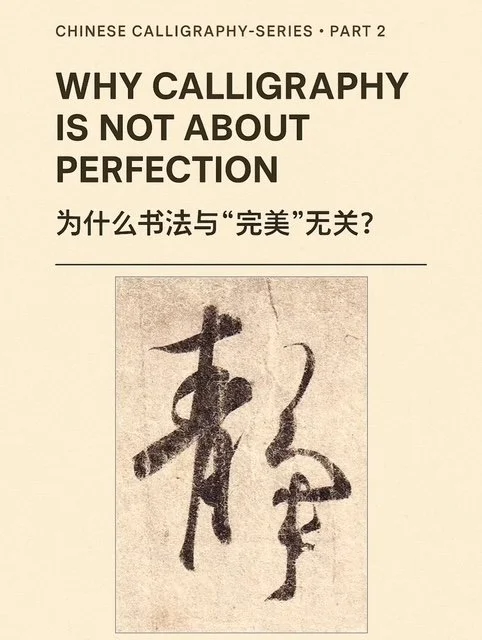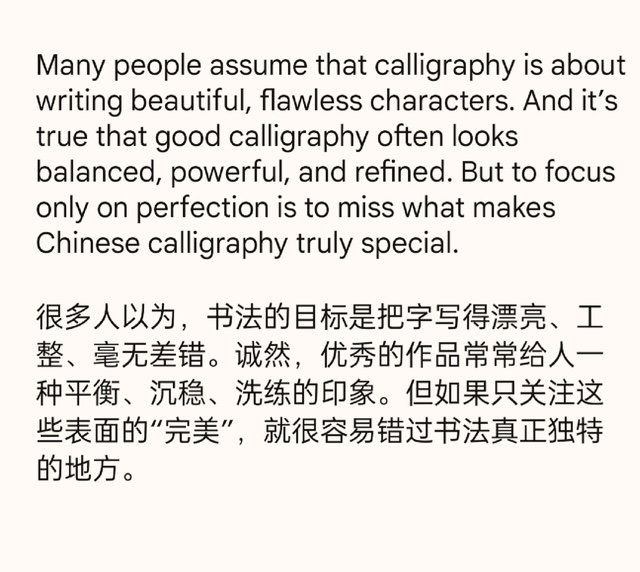Why Chinese Calligraphy Is Not About Perfection
Many people assume that calligraphy is about creating flawless characters—neat, balanced, elegant. While excellent calligraphy often carries a sense of order and grace, focusing solely on perfection risks missing what makes this art form so meaningful.
Calligraphy is not about getting every stroke just right. It’s about responding to the moment. The brush is soft. The ink flows. The paper absorbs everything. There are no do-overs. You can’t undo a stroke, and that’s the beauty of it. Every movement leaves a mark—and with it, a sense of presence and honesty.
This is why Chinese calligraphy is less like graphic design and more like dancing or jazz. You can prepare and practice, but when it’s time to write, you must respond intuitively. You don’t control the brush—you work with it. It’s not a blueprint. It’s a dialogue.
A stroke might wobble. The ink might skip. The hand might move slightly too fast or too slow. And yet, those so-called “imperfections” bring more life, more emotion, and more vitality to the work. What matters most in calligraphy is not flawlessness—it’s whether the writing feels alive.
Want to explore the freedom and rhythm of calligraphy? Join an upcoming virtual or in-person workshop with Jojo Liu at https://jojocalligraphy.com and experience how imperfection becomes art.


